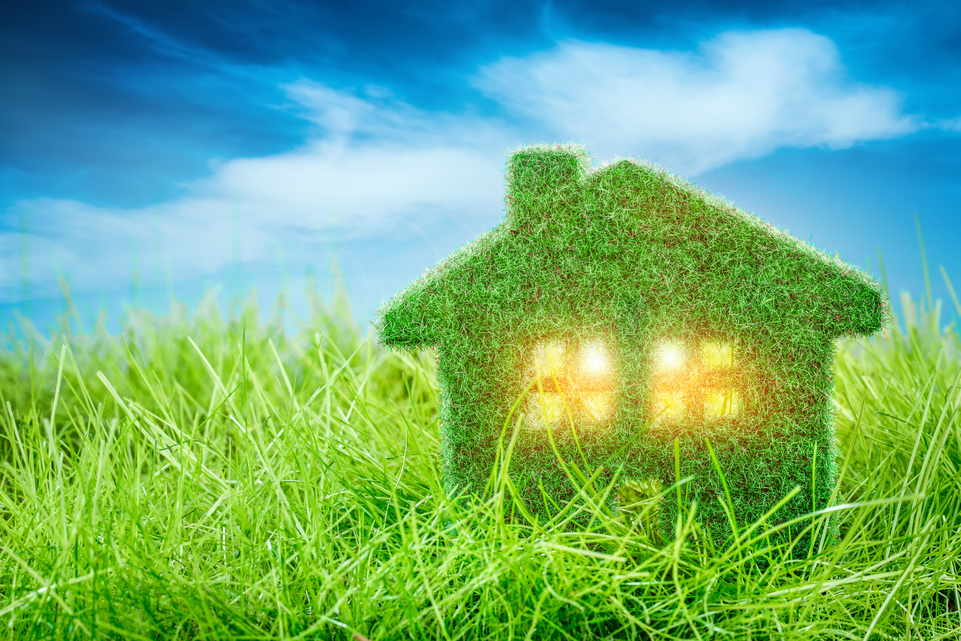The concept of regulating house energy according to the exact location of its inhabitants has been in the air for quite some time, and even technologically feasible for quite some time. However, the cost of sensors has kept the complete fitting of homes with human data receivers unreasonably expensive and reserved to an elite. The Oak Ridge National Laboratory has therefore been working on a state-funded research program to create new generation sensors which will need no installation, or batteries.
Lead engineer Pooran Joshi explains “ORNL’s new wireless sensor platform could reduce costs to $1–$10 per node by leveraging advanced manufacturing techniques such as additive roll-to-roll manufacturing. If successful the advanced manufacturing processes will enable electronics such as circuits, sensors, antennae, photovoltaic cells (or other energy harvesting devices), and batteries to be printed on flexible plastic substrates (base materials). The self-powering, long-life nodes can be installed without wires using a peel-and-stick adhesive backing.” With a completely wired home, comfort would be greatly increased for the inhabitants and energy bills would be seriously alleviated, with energy being spent only where useful and nowhere else.
With security high on the list of homeowner concerns, homes are becoming increasingly integrated with our smartphones and computers. The American start-up Alarm.com gives a description of what is now technically possible, to secure homes : “users can arm and disarm their security system from the phone, adjust their thermostat, watch footage from security cameras set up around the house, all without even being at home. Users can have control of their house without even being in the same country.” While enhanced home security was reserved to high-purchasing-power households just a few years ago, it will soon available to all. Remotely granting access or denying it will be just as simple, using the same platforms.
John Carlsen, a home automation expert, reviewed “Smart locks are part of a larger smart home trend that allows you to control certain electronics in your house with a smartphone. These locks have several advantages that make your home more convenient and secure. Some smart locks let you send guest keys to your family and friends to eliminate the key under the mat. Other smart home locks automatically unlock your door as you walk up, which is helpful if your hands are full.” While busy improving security, engineers will increase comfort at the same time.
One of the closest technological targets is getting houses to be energetically self-sufficient, both by reducing their consumption to the minimum (see above) and by producing their own energy. Many sources are being worked on, with solar panels being constantly improved, but also new-generation energy production systems, even with the most unexpected methods. Nicola Davis investigated new production methods for the Guardian : ”The path to your front door could be embedded with tiles like those by Pavegen that can turn your visitors’ footsteps into electrical power.” Roof lining is being produced by Energen, which describes : “Building products powerhouse Certainteed launched the Energen system that incorporates thin-film laminates with a traditional asphalt roofing shingle. The PV laminates lie flush with the roof providing a streamlined, visually appealing appearance.” All in all, hundreds of new and alternative house-sized power production methods have hit the market since the beginning of the millenium.
All in all, and beyond what the house will contain in terms of appliances, the mere building of the house is already starting to be revolutionized. French company Logelis has designed a new way to build fully integrated structures, in which self-supporting panels, which contain all the electric and plumbing elements needed, are assembled. The construction resembles legos, but using high-grade materials. Logelis CEO Renaud Sassi thus describes his approach: “I am part of these people who seek new techniques for tomorrow, to build simpler, faster, cheaper, but bearing in mind the performance objective... In the end, houses have a high energetic performance level, and are quickly built, which induces pressed down costs. This meets a crucial challenge for businesses on the housing market who must build highly energy-efficient houses, while bearing in mind the family's purchasing power. » The Logelis’ method will reduce construction times three- or fourfold, and significantly reduce the cost; thus enabling people around the world to become the owners of their homes. Today, the prices for such homes are under the prices of low-cost traditional houses, regardless of the fact that the materials used provide top-of-the-market reliability and energetic efficiency.
Innovations are plenty on the housing market. While many of these inventions will remain at the stage of amusing gimmicks, but some of the creations above are bound to become slowly standard. The multiplication and growing sophistication of houses will not be limited to the West. The Center for affordable housing in Africa published a report forecasting the important growth of the housing market on the African continent, similar to what is expected in Asia and Latin America, in the coming years :”the major growth drivers in the sector have been credited to: an increased inflow of foreign investment; increased institutional investment from local companies including PFAs and Mutual Funds; the growing population of High Net Worth individuals; and the targeted intervention of the Federal Government in the housing finance sector.” That will be several hundreds of millions of households, in the developing world, to equip (over the decades) with all of this new technology – an infinite quest.
Lead engineer Pooran Joshi explains “ORNL’s new wireless sensor platform could reduce costs to $1–$10 per node by leveraging advanced manufacturing techniques such as additive roll-to-roll manufacturing. If successful the advanced manufacturing processes will enable electronics such as circuits, sensors, antennae, photovoltaic cells (or other energy harvesting devices), and batteries to be printed on flexible plastic substrates (base materials). The self-powering, long-life nodes can be installed without wires using a peel-and-stick adhesive backing.” With a completely wired home, comfort would be greatly increased for the inhabitants and energy bills would be seriously alleviated, with energy being spent only where useful and nowhere else.
With security high on the list of homeowner concerns, homes are becoming increasingly integrated with our smartphones and computers. The American start-up Alarm.com gives a description of what is now technically possible, to secure homes : “users can arm and disarm their security system from the phone, adjust their thermostat, watch footage from security cameras set up around the house, all without even being at home. Users can have control of their house without even being in the same country.” While enhanced home security was reserved to high-purchasing-power households just a few years ago, it will soon available to all. Remotely granting access or denying it will be just as simple, using the same platforms.
John Carlsen, a home automation expert, reviewed “Smart locks are part of a larger smart home trend that allows you to control certain electronics in your house with a smartphone. These locks have several advantages that make your home more convenient and secure. Some smart locks let you send guest keys to your family and friends to eliminate the key under the mat. Other smart home locks automatically unlock your door as you walk up, which is helpful if your hands are full.” While busy improving security, engineers will increase comfort at the same time.
One of the closest technological targets is getting houses to be energetically self-sufficient, both by reducing their consumption to the minimum (see above) and by producing their own energy. Many sources are being worked on, with solar panels being constantly improved, but also new-generation energy production systems, even with the most unexpected methods. Nicola Davis investigated new production methods for the Guardian : ”The path to your front door could be embedded with tiles like those by Pavegen that can turn your visitors’ footsteps into electrical power.” Roof lining is being produced by Energen, which describes : “Building products powerhouse Certainteed launched the Energen system that incorporates thin-film laminates with a traditional asphalt roofing shingle. The PV laminates lie flush with the roof providing a streamlined, visually appealing appearance.” All in all, hundreds of new and alternative house-sized power production methods have hit the market since the beginning of the millenium.
All in all, and beyond what the house will contain in terms of appliances, the mere building of the house is already starting to be revolutionized. French company Logelis has designed a new way to build fully integrated structures, in which self-supporting panels, which contain all the electric and plumbing elements needed, are assembled. The construction resembles legos, but using high-grade materials. Logelis CEO Renaud Sassi thus describes his approach: “I am part of these people who seek new techniques for tomorrow, to build simpler, faster, cheaper, but bearing in mind the performance objective... In the end, houses have a high energetic performance level, and are quickly built, which induces pressed down costs. This meets a crucial challenge for businesses on the housing market who must build highly energy-efficient houses, while bearing in mind the family's purchasing power. » The Logelis’ method will reduce construction times three- or fourfold, and significantly reduce the cost; thus enabling people around the world to become the owners of their homes. Today, the prices for such homes are under the prices of low-cost traditional houses, regardless of the fact that the materials used provide top-of-the-market reliability and energetic efficiency.
Innovations are plenty on the housing market. While many of these inventions will remain at the stage of amusing gimmicks, but some of the creations above are bound to become slowly standard. The multiplication and growing sophistication of houses will not be limited to the West. The Center for affordable housing in Africa published a report forecasting the important growth of the housing market on the African continent, similar to what is expected in Asia and Latin America, in the coming years :”the major growth drivers in the sector have been credited to: an increased inflow of foreign investment; increased institutional investment from local companies including PFAs and Mutual Funds; the growing population of High Net Worth individuals; and the targeted intervention of the Federal Government in the housing finance sector.” That will be several hundreds of millions of households, in the developing world, to equip (over the decades) with all of this new technology – an infinite quest.


















